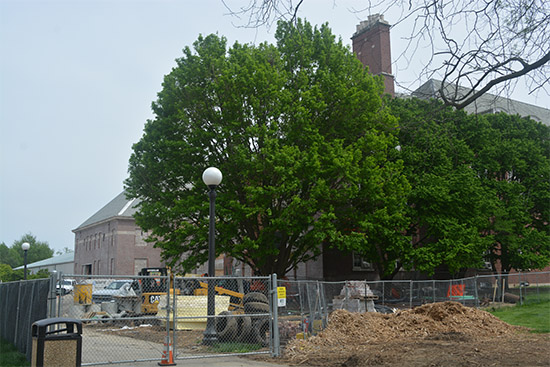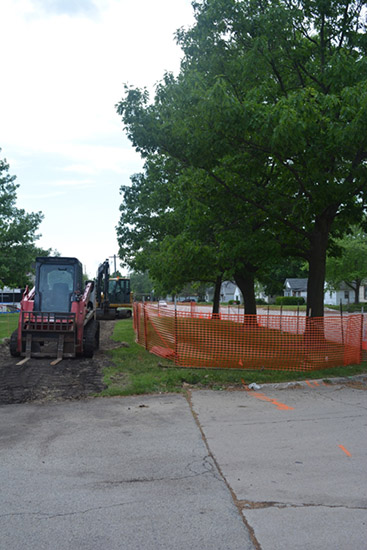Issue 12, July 30, 2018
Protecting Trees During Construction
Are your clients taking the necessary steps to protect their trees during construction projects? Unfortunately, most homeowners don't consult with an arborist prior to starting their major projects. More often, they contact an arborist well after the project has been completed; when the tree starts to show signs of stress and dieback. This type of situation is fairly common at the plant clinic. Each year, the clinic receives numerous samples taken from trees in advanced stages of decline. For some of these sampled trees, the decline can be attributed to various insects, diseases or environmental stresses. Other samples don't yield enough clues or information to identify a cause. Those samples require additional detective work by plant clinic staff. The first step is usually to call the client to obtain additional details that may have been omitted from the sample form. Too often, the client mentions a recent construction or renovation project in close proximity to the tree. At this point, the damage has been done, and management options are limited. For many of these trees, the decline may have been avoidable with extra planning and work.
Construction projects impact trees in many ways. Large equipment can cause mechanical injury to a tree by breaking branches, gouging large wounds into the trunk, or by severing large roots while digging. More often, damage results from a less noticeable impact to the tree's root system. Construction materials stored under the tree and equipment driving over the root system all cause significant soil compaction. This compaction results in poor air exchange to the roots and can contribute to decline.

Tree with inadequate protection from construction damage. Note the construction equipment and building materials stored directly under the tree.
Ideally, an arborist should be consulted prior to starting any major construction project. They will be able to evaluate the existing trees and identify trees worth preserving. They will also provide recommendations to help protect and limit impact to tree health.
The first line of protection is to exclude all construction activities, equipment, and building supplies from areas around the protected tree(s). Sturdy temporary fencing can be used to form a construction barrier. The size of the protected area will vary based the tree species and size. As a rule-of-thumb, the International Society of Arboriculture recommends a study fence be placed approximately one foot away from the trunk for every one inch of trunk diameter. The tree's dripline can also be used to help identify the protected area. Be aware, tree roots often extend well beyond the dripline. For this reason you should protect as much of the area beyond the dripline as possible. Enforcing these protected areas is a priority. Discuss the protected areas with your client's contractor. When possible, have them include tree protection in the construction contract, as well as penalties for violations. Post signs on the barriers to remind on site workers. During construction, have your clients check the site frequently to ensure the barriers are still in place and all tree protection provisions discussed with the contractor are being followed.

Trees with temporary fencing to protect the root zone during the installation of a sidewalk.
Space is often limited on construction sites. Protecting the entire root system may not be feasible. Even with our best efforts, some injury may still occur. An arborist will recommend strategies to help allevieate the stress from compaction. They can recommend various methods for aerating the compacted soils, as well and mulching and irrigation practices to help prevent water stress. (Travis Cleveland)
Author:
Travis Cleveland